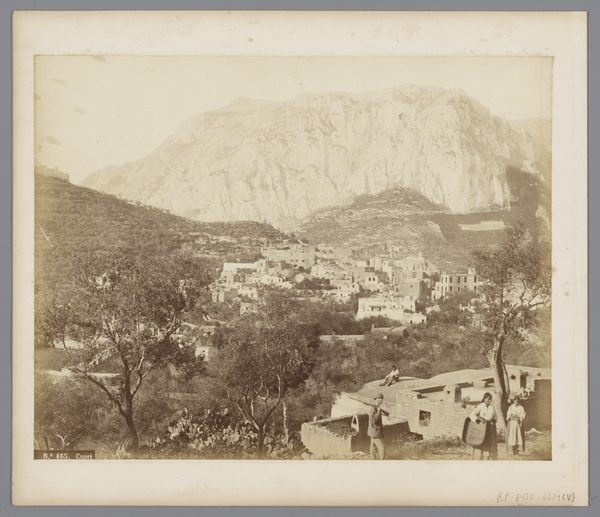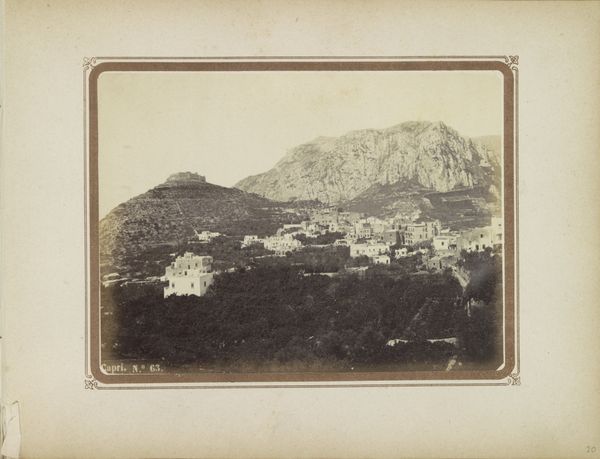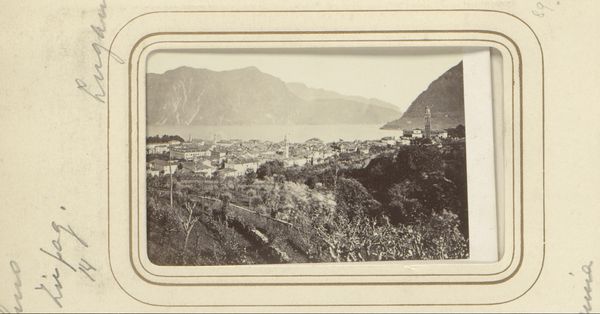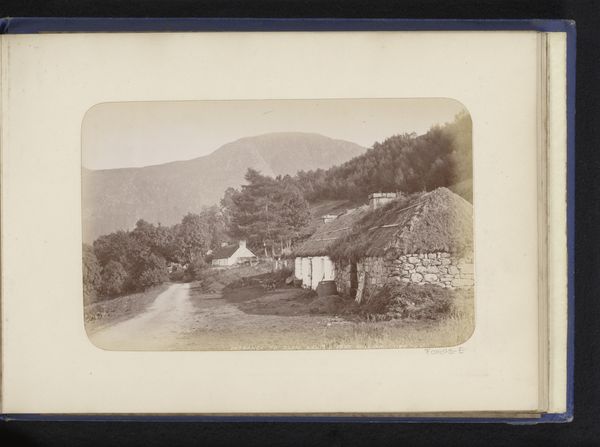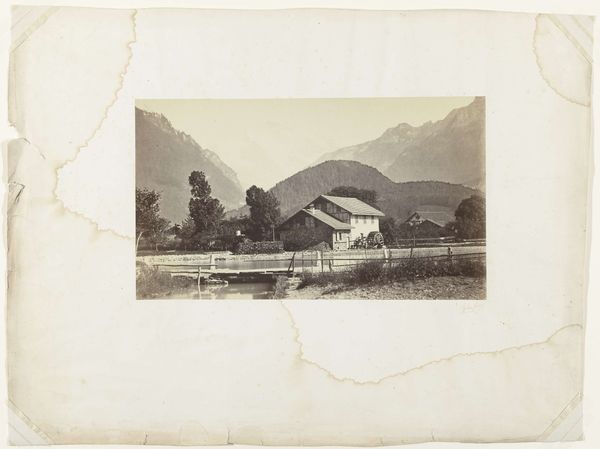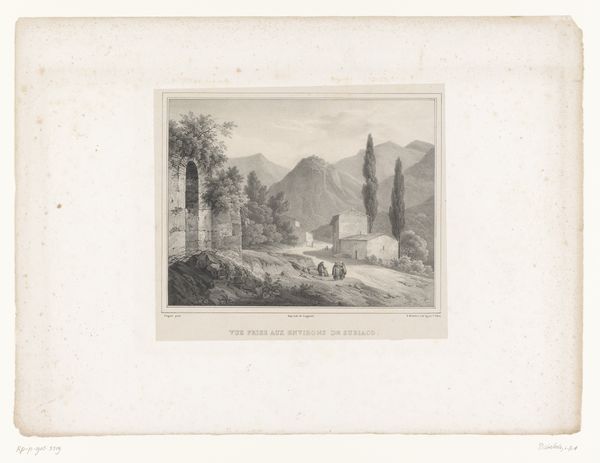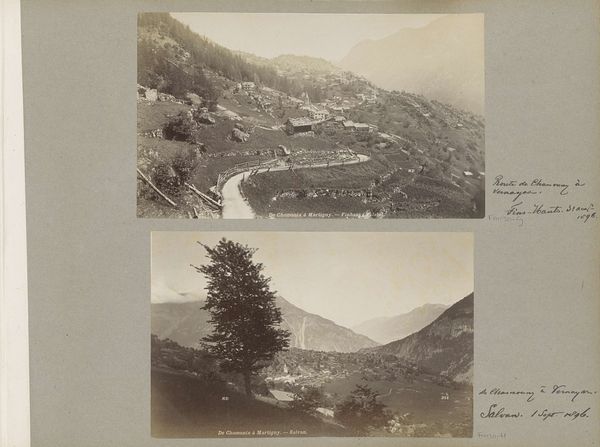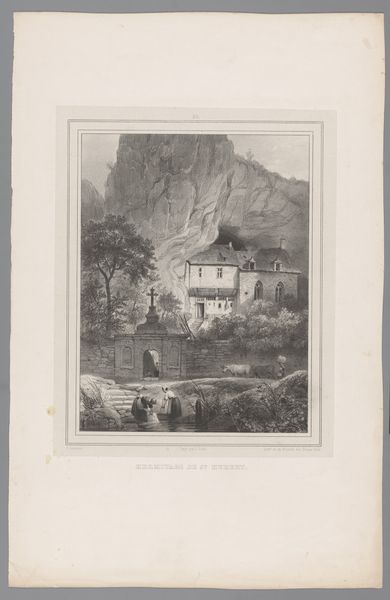
Fotoreproductie van een schilderij van een landschap met enkele huizen door Ernest Slingeneyer before 1863
0:00
0:00
daguerreotype, photography
#
landscape
#
daguerreotype
#
photography
#
realism
Dimensions: height 226 mm, width 382 mm
Copyright: Rijks Museum: Open Domain
Curator: This is a photograph predating 1863 titled "Fotoreproductie van een schilderij van een landschap met enkele huizen door Ernest Slingeneyer." It’s attributed to Edmond Fierlants and seems to be a daguerreotype depicting a rural landscape. Editor: The composition immediately strikes me. The arrangement is carefully considered, with the positioning of the houses leading the eye toward the soft gradations of the mountainous backdrop. The tones are very subdued, almost sepia-like. Curator: Indeed. The process of creating a daguerreotype was intensely material. Each plate had to be meticulously cleaned, sensitized with chemicals like iodine and bromine, exposed in the camera, developed with mercury vapor, fixed, and then often gilded. Think of the hands-on labor involved. Editor: Exactly! One could interpret the entire process, and its reproducibility, within a system of signs: the mountains acting as silent witnesses; the arrangement of light; the buildings almost like musical notes on a staff… each carries meaning, creating visual harmony. Curator: Well, viewing the process allows us to examine how this "harmony" was achieved within the industrial and artistic practices of that era. Each stage demanded a high degree of skill and chemical control and therefore required laborers working towards photographic production, don't you think? Editor: Of course. And within the finished photograph, there's a compelling interplay between clarity and the inherent softness of the medium. That creates a visual narrative. Curator: That visual softness could stem from a range of factors intrinsic to the photographic materials of that era and to the laborious darkroom work. Perhaps imperfections in the lens, sensitivity of the chemicals, and the daguerreotypist's technique contribute to that romanticized Realist style. Editor: Ultimately, I'm interested in this quiet observation—that even a medium thought to perfectly reflect reality is laden with artistry. The photograph transforms into something beyond the referent it mimics. Curator: Precisely. And reflecting upon how those Realist and labor contexts interweave offers a lens to better interpret the subject in context with the social elements. Editor: The artist seems to subtly propose a discourse on land, labor, and living by documenting the landscape. Curator: So, by considering the interplay between subject and material conditions, we can gain fresh insights on landscape’s role and symbolism at this pivotal historical moment.
Comments
No comments
Be the first to comment and join the conversation on the ultimate creative platform.


